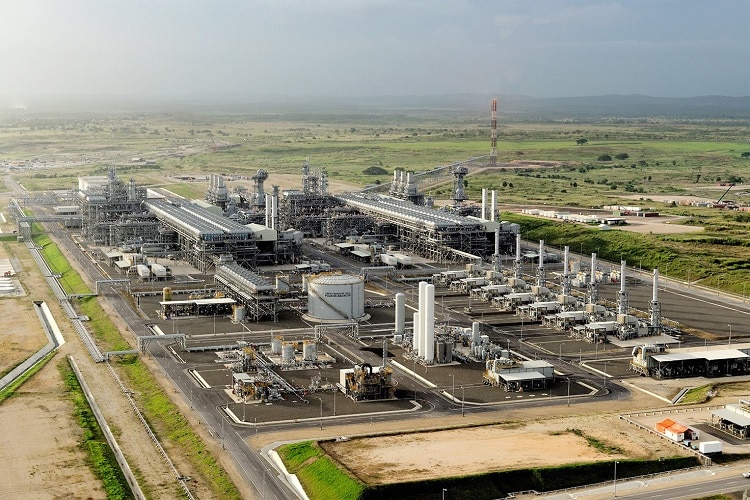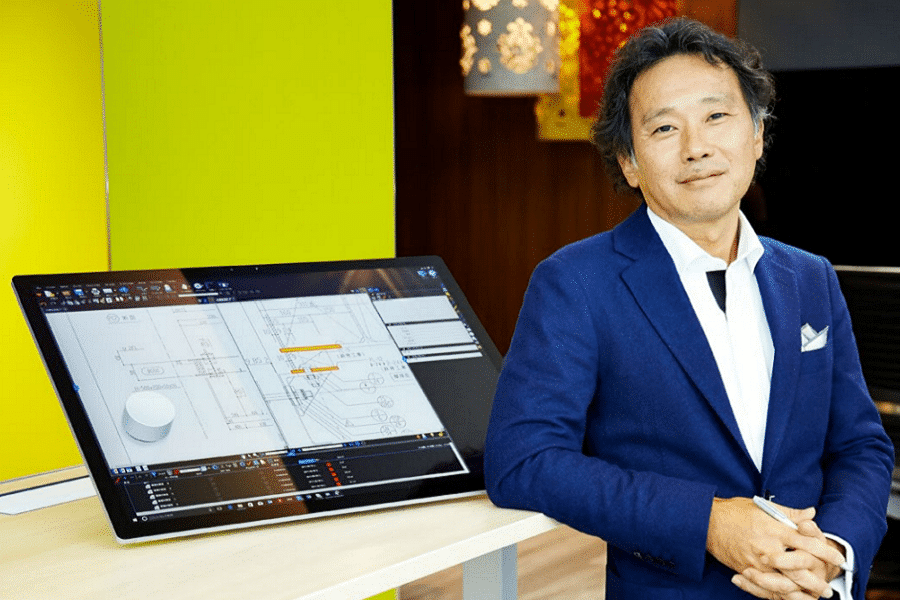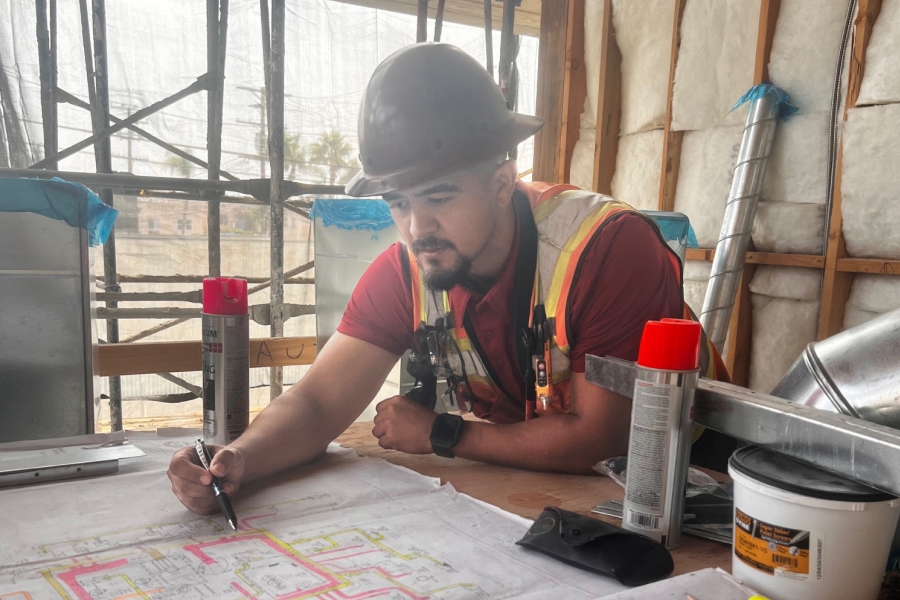Photograph: Yohei Tanabe with Bluebeam Revu
Once you’ve experienced the efficiencies that come with using a fully integrated technology solution for structural design, it’s very difficult to go back to yesterday’s methods.
That was the challenge faced by Structural Designer Naotaka Minami from construction firm Obayashi Corporation, who was seconded to London for two years. He’d previously experimented with PDF management software and found various packages contained too many inefficiencies or user-design faults to convincingly create an argument for a technological transformation. But this was about to change.
Obayashi Corporation: With collaboration comes confidence
In the British office, Mr Minami became familiar with Bluebeam Revu.
“I soon realised that it was easy to use, and I gradually began to make full use of the software,” he said. “When I returned to Japan I had to install Bluebeam Revu immediately. If I didn’t, it would be a hindrance to my work.”
Part of the transformation process involved using the free trial version of the software to allow his colleagues to experience the many advantages.
“Other PDF management software basically felt like text editing software,” he said. “But we mainly deal with drawings, so it’s important we’re able to deal with it using handwriting as well as typed text.”
Revu’s markup functionality allowed Minami and his colleagues to write and make other marks, as well as use stamps, photos and various other graphical elements on PDF files.

In a working environment in which a design project can take a year or more for large-scale developments, Minami said there isn’t a single day that he doesn’t use Revu, regardless of the project size.
“Files in Bluebeam Revu are shared in the cloud so everyone involved in the project can refer to them and proceed,” he said. “It’s possible for members of various design teams, such as equipment design and structural design, as well operators who collaborate with those design teams, to collaborate to create and check drawings without any time lag.”
“In the past, whenever I made a change on paper, I couldn’t give it to everyone immediately,” he continued. “There was always a time penalty. Sometimes changes happened without my knowledge. With Bluebeam Revu, that risk no longer exists.”
Minami also routinely uses the comparison function that detects changes in drawings.
“The more complex a building is, the more parts the human eye overlooks,” he said. “Bluebeam Revu makes changes clear so they’re not overlooked. A great deal of stress and worry has simply disappeared.”
Chiyoda Kakoh Construction Corporation: 75% reduction in drafting time
When demand for LNG dramatically rose in the United States as a result of increased awareness around environmental issues, several U.S.-based energy companies turned to Houston-based Chiyoda International Corp. (CIC).
CIC is a part of the Chiyoda Kakoh Construction Co. Ltd., a comprehensive engineering company that conducts business in Japan and overseas under the philosophy of harmonising energy and the environment.
As the shale gas revolution took hold in the U.S., CIC experienced a sudden rise in demand. The U.S. construction industry simply didn’t have enough experienced designers of LNG plants to cope with the boom.
Amid a local-talent drought, CIC was called upon to provide front-end engineering design (FEED) support across several LNG plants.

During the FEED stage of design, the client must make numerous important and final investment decisions. Absolute clarity, high visibility and immediate flexibility is essential for the very best outcomes. With more than 1,500 drawings shared across 300 staff and stakeholders on these projects, this was delivered by CIC through Bluebeam Revu.
By using Revu, average draft creation time fell from 12 hours to three hours.
“When creating and reviewing plant drawings involving various departments, it is necessary to have a system for always sharing the latest drawings,” said CIC IT manager Takasu.
“When creating drawings that rely on CAD, there will be a time lag in the update timing. But with Bluebeam Revu, it is possible to update PDF drawings while simultaneously reviewing them with multiple stakeholders.”
Staff and partner companies around the world, including in Japan, India and the Philippines, collaborated and participated in the project in real-time. Interdisciplinary and simultaneous reviews of designs became possible. Multi-faceted aspects of various design areas, such as machinery, electricity, civil engineering and transport could all be checked and signed off, or improved upon, at once.
Efficiencies in the design process were amplified as once time-consuming, manual processes were automated. For example, frequently used components in the LNG plant design process, such as valves, compressors, vessels and pumps, as well as general-purpose block diagrams that combine multiple components, were added to the Tool Chest. This meant they were easily and immediately added to new drawings and designs when required, regardless of territory or local language, with far fewer errors.
“In-house Bluebeam enthusiasts created thousands of original toolsets,” said CIC Project Engineer Farmer. “After that, any time we’re using Bluebeam Revu these CIC-original toolsets are ready to use.”
Taisei Corporation: Making meetings interactive
Although it’s perfectly compatible with desktop computers and laptops, Bluebeam Revu truly revolutionised meetings at Taisei Corp. when it was used on a 20-inch, 4K touch-screen tablet.
The construction, development and engineering firm headquartered in Shinjuku, Tokyo, with offices in 13 other countries, found staff, clients and other stakeholders were far more engaged and productive when they were able to physically interact with the design on a large tablet, such as the Panasonic Toughpad 4K.
“If you project a CAD drawing or BIM model on a screen with a projector during a meeting, people who are watching tend to become bystanders,” said Yohei Tanabe, former manager, planning office in Taisei’s construction department, who has since founded his own technology company, Build-C.
“But when we have the Toughpad 4K on the table and those in the meeting surround it during the discussion, it becomes easier for each participant to think independently and come up with ideas. The meeting becomes more of an innovation session.”

Tanabe believes Bluebeam Revu is the most suitable software for engineers who use drawings for construction management, although it also exports 3D PDF files from BIM and other software.
“The reason is that there is no complicated drawing menu, and the functions such as drawing, check, search and quantity calculation, required for engineers who utilise drawings, are very easy to use,” he said.
In fact, the quantity calculation function saves a great deal of time not only in design, but also on site, Tanabe said.
Areas on PDF drawings can be calculated by enclosing a part of the drawing with polygons or curves. Volume can be automatically calculated by multiplying by the height. Even for complicated shapes such as curves and holes, the area and volume can be accurately measured using the curve trace function.
“It’s a convenient way to calculate the exact quantity of ready-mixed concrete on site,” Tanabe said.
The Taisei Corp. successfully piloted Bluebeam Revu on the Panasonic Toughpad 4K to transform the efficiency and performance of design management teams from the beginning of a project to completion of construction.
“By leaving the time-consuming work to the software and ensuring all essential checks are made through the eyes of an engineer, the work of picking up the quality is made significantly more efficient,” Tanabe said.











